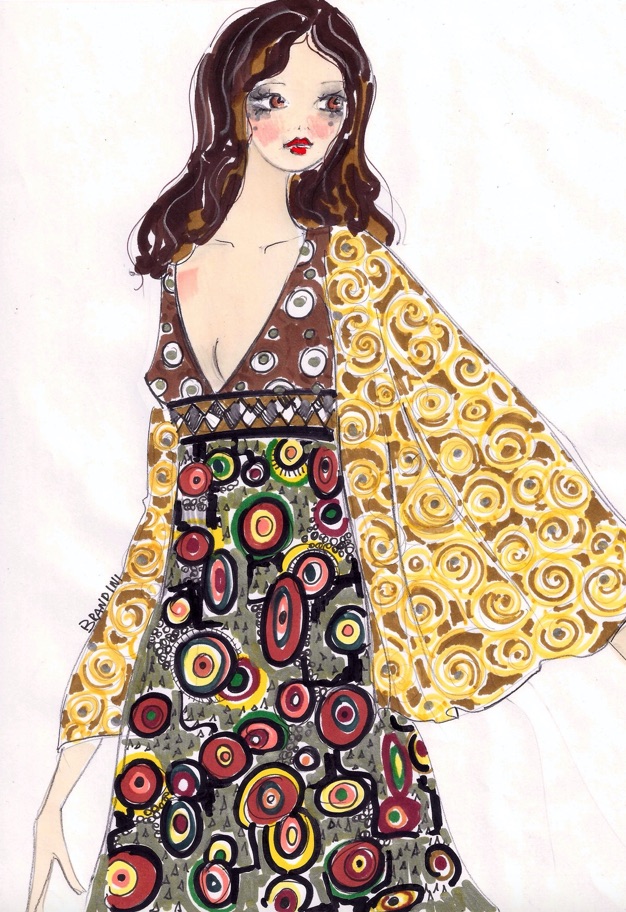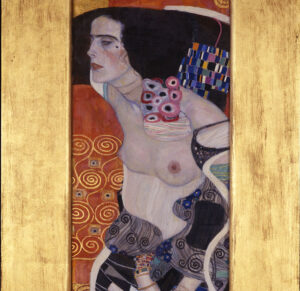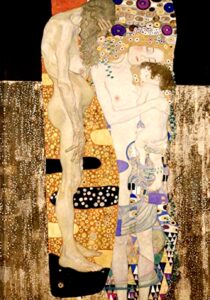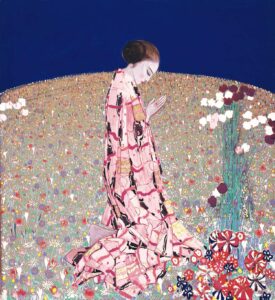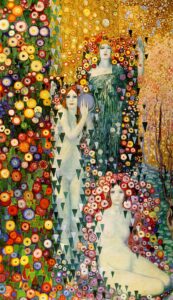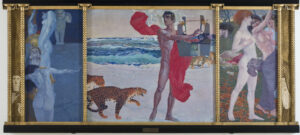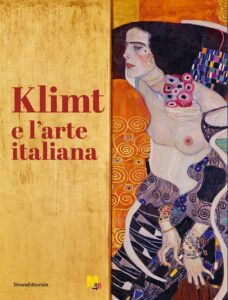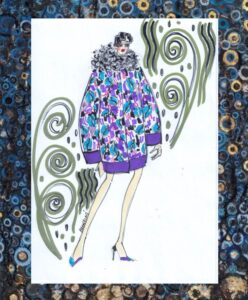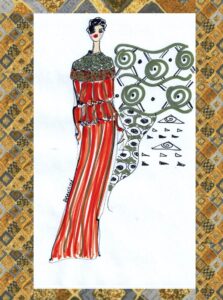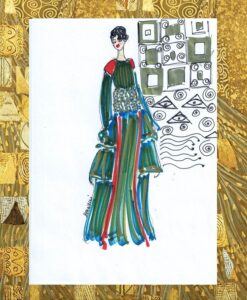Poster of the exhibition Klimt and Italian art
“Lena” by Beatrice Brandini
At the Mart, until June 2023, we can admire two masterpieces by Klimt: “Judith II” and “The Three Ages”, two paintings by the Viennese master that became part of the Italian public collections after the 1910 Venice Biennale and the Exhibition International of 1911 in Rome.
Gustav Klimt “Judith II” (detail), 1909. Work exhibited at the Mart in Rovereto
These two works document the master’s passage in Italy and constitute the fulcrum of the exhibition “Klimt and Italian art”, curated by Beatrice Avanzi, from an idea by Vittorio Sgarbi, demonstrating how much this extraordinary painter influenced artists of the caliber of Felice Casorati, Vittorio Zecchin (defined as the Italian Klimt), Galileo Chini, Adolfo Wildt, and many others present in this very interesting exhibition.
Gustav Klimt the “The Three Ages” 1905. Work exhibited at the Mart in Rovereto
In fact, Klimt created some of his most important works in Italy, during his frequent travels in which he visited the Basilica of San Marco in Venice, and the mosaics of Ravenna. The latter influenced him, inspiring his famous golden backgrounds and his rich and irresistible decorations. The use of gold or platinum leaf, characteristic of Klimt’s style, enhanced the rich decoration of the backgrounds, ornamental motifs that become many micro-tiles of an extraordinary mosaic.
Felice Casorati “La Preghiera” – 1914 Work exhibited at the Mart in Rovereto
Klimt was discovered and admired above all when he presented twenty-two works in a room dedicated to him during the IX Biennale. “An aristocratic innovator of style”, as Boccioni defined him a few years later, overlapping the more conservative critics who judged him decadent and incomprehensible.
Galileo Chini “The life and animation of the meadows” – 1914 Work exhibited at the Mart in Rovereto
However, Italian artists reworked Klimt’s influence in an independent and original way, as evidenced by the lines, decorations and above all by the style, which ended up adapting and being influenced by local artistic currents.
Luigi Bonazza “The legend of Orpheus – Rebirth of Eurydice – Death of Orpheus” 1905. Work exhibited at the Mart in Rovereto
Vittorio Zecchin artist and craftsman, son of a master glassmaker, elaborated, also thanks to the closeness of Klimt, a dreamlike and fairy-tale style, almost oriental (the pictorial cycle for the Hotel Terminus in Venice is famous, dedicated to the tales of the Arabian Nights ). Galileo Chini, just like Zecchin, was an eclectic artist, painter, ceramist and decorator, Klimt’s influence was particularly evident in the paintings on the theme of spring. Adolfo Wildt managed to work marble with a unique mastery, his works are spiritual and dramatic; his graphic production, where the ethereal figures are represented in “dilated” spaces, enriched by decorations of stars and crosses, are clearly influenced by Klimt.
Catalog of the exhibition Klimt and Italian art. Silvana Editorial
Influences from the great Austrian painter also came from the artists of Cà Pesaro, where the headquarters of the Galleria d’Arte Moderna was established in the Palazzo Pesaro, directed by Nino Barbantini, which immediately became a center of the most avant-garde production and exhibition of that period. Here the artists approached the Central European artistic content. Klimt’s presence at the Biennale did the rest.
This beautiful exhibition presents different disciplines, such as painting, sculpture and other decorative arts, all characterized by a sumptuous, fascinating sign, typical of the Secession.
Mood Klimt by Beatrice Brandini
I don’t know if I’ll be able to bring my son to visit it by June, but I’ll try to do it at any cost, I think it’s really worth it.
Good life to everyone!
Beatrice



